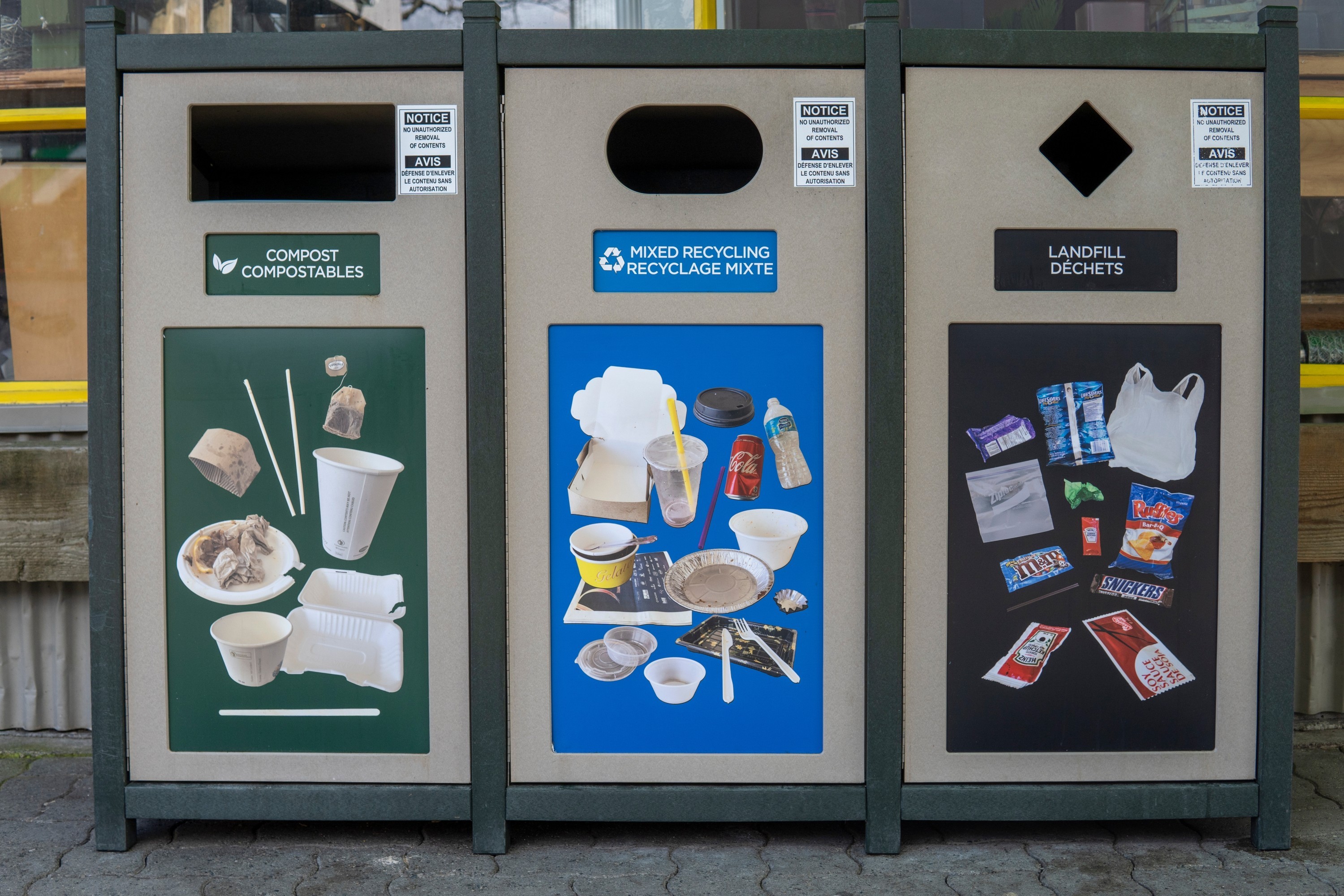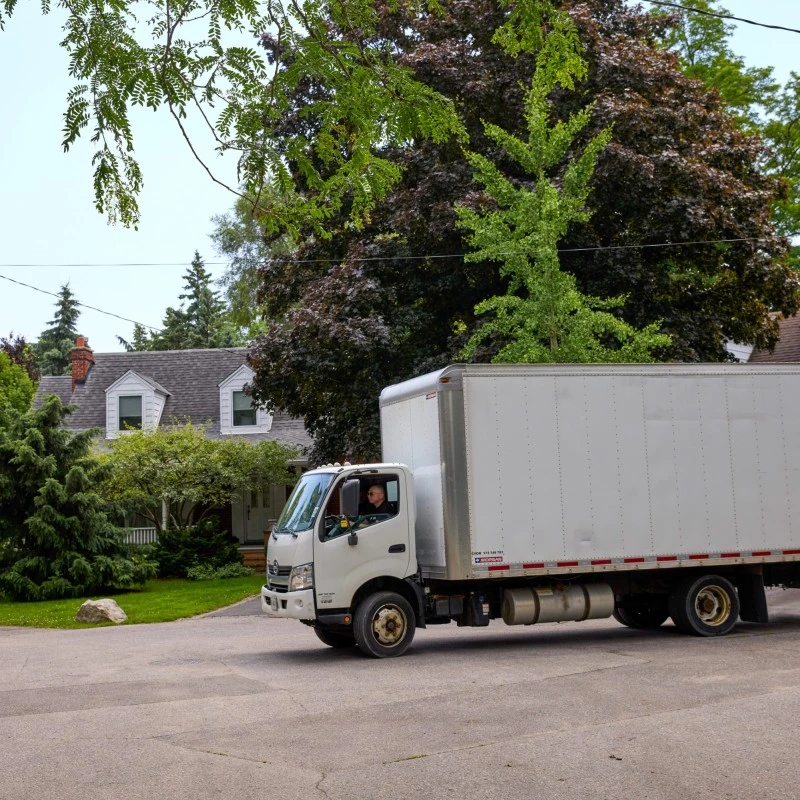Understanding Canada's Recycling and Waste Management Systems


You may be wondering, what exactly are those bins of various colours found in public areas all over Canada? They are part of Canada’s recycling and waste management system, and each different bin is for specific materials destined either for the landfill, a recycling plant, or a municipal composting system. Many Canadian cities and towns have pickup programs for recycling, making the process easier and more efficient for residents.
This article covers a range of topics relating to waste management and recycling in Canada:
How Canada handles waste
 In the 1970s and 1980s, Canadians and the governments started to become concerned about environmental sustainability and landfill capacity. This led to the introduction of recycling programs in various municipalities. Over time, governments implemented policies to reduce waste, such as banning certain materials from landfills and introducing programs that make manufacturers responsible for the proper disposal of their products.
In the 1970s and 1980s, Canadians and the governments started to become concerned about environmental sustainability and landfill capacity. This led to the introduction of recycling programs in various municipalities. Over time, governments implemented policies to reduce waste, such as banning certain materials from landfills and introducing programs that make manufacturers responsible for the proper disposal of their products.
Reducing waste in Canada and worldwide
Waste is a human-caused issue and has created monumental problems for the planet. It is now beyond imperative to rethink how we buy, use, and dispose of items.
The waste hierarchy ranks the most effective waste management strategies in this order:
-
Consumer waste prevention (don’t buy or use products that create landfill waste)
-
reuse and repair products
-
Recycling materials to create new products
-
energy recovery through processes like Waste-to-Energy
-
landfill disposal
Canadians can support this system by purchasing recyclable (or better, reusable) products, or those made from recycled materials. Transitioning from a "take, make, waste" model to a circular economy (a hugely impactful model where products are reused, refurbished, and recycled) can help keep waste to a minimum. Municipal solid waste (MSW) in Canada includes recyclables, organic waste, construction waste, and residual materials.
Important waste management policies in Canada
Canada has implemented waste management and recycling policies to address environmental concerns and promote sustainability. Here are some of the most important ones:
- Extended Producer Responsibility (EPR) Programs - Manufacturers are required to take responsibility for the proper disposal of certain products, including electronics, batteries, packaging, and hazardous materials.
- Zero Plastic Waste Initiative - Plastic waste is one of the biggest problems on the planet. The Zero Plastic Waste Initiative was launched by the federal government of Canada in hopes of eliminating plastic waste by 2030. The initiative includes banning harmful single-use plastics and enhancing plastic recycling and recovery.
- Canada-wide Strategy on Zero Plastic Waste - Plastic is such a problem that there are multiple policies in place to help reduce its use. Developed by the Canadian Council of Ministers of the Environment (CCME), this strategy aims to reduce plastic waste and pollution through improved product design, collection, and recycling systems.
- Waste-Free Ontario Act - Enacted by the Ontario government, this act includes the Strategy for a Waste-Free Ontario, which focuses on building a circular economy and improving waste diversion rates.
- British Columbia’s Recycling Regulation - These regulations in B.C. mandate EPR for several products, including electronics, packaging, and household hazardous waste.
- Quebec’s Residual Materials Management Policy - This policy outlines goals for waste reduction, reuse, recycling, and recovery, in order to reduce landfill use and promote the sustainable management of materials.
- Landfill Bans and Restrictions - Various provinces and municipalities have implemented bans on specific materials such as organic waste, electronic waste, and certain plastics, to divert these materials from landfills.
- Organic Waste Diversion Programs - These programs are for collecting and composting organic waste, reducing landfill methane emissions and creating valuable compost for agriculture, gardening and landscaping.
- Municipal Recycling Programs - Curbside collection of recyclables and operating recycling depots, make it easier for residents to participate in recycling efforts.
- Product Stewardship Programs - These programs require businesses to safely manage the disposal of products like tyres, paint, and pharmaceuticals.
READ: 1% For the Planet: How Canadians Can Get Involved
Recycling in Canada
Recycling is highly encouraged in Canada, and many municipalities offer curbside collection of recyclables. On scheduled days of the week, trucks will go to all of the neighbourhoods and pick up sorted, recyclable items from residents.
Common recyclables suitable for curbside pickup include:
-
Paper
-
Plastics
-
Metals
-
Glass
-
Tetra packs
Some items don’t go in the regular bins, and they need to be taken to special recycling depots. These items include:
-
Electronics
-
Batteries
-
Hazardous materials
-
Large household items
Curbside Pickup Decoded: Colour-coded Bins for Different Types of Waste

Your waste and recycling is to be sorted before you place it on the curb for pickup. Luckily, there is a colour-coded system for keeping your items sorted.
-
Blue bins are for recyclables. Be sure to sort these properly as non-recyclable items mixed in can cause an entire batch of otherwise good recyclables to be thrown in the landfill.
-
Green bins are for organics. Items that can go in the green bin include:
-
Vegetables
-
Meats
-
Dairy products
-
Nuts
-
Shells
-
Baked goods
-
Coffee grounds
-
Coffee filters
-
Non-plastic tea bags
-
Food-industry paper products that aren’t coated in wax or plastic
-
Pet waste
-
Biodegradable diapers (depending on the laws of your municipality)
-
-
The black bin is for garbage, which is basically everything that doesn’t go into the green or blue bins, with the exception of EPR items. In many parts of Canada, garbage collection fees depend on the volume of your black bin waste.
Composting in Canada

The planet is struggling with topsoil erosion due to mismanaged agricultural practices, deforestation and industrial practices. The entire cycle of life on Earth depends on healthy topsoil. Beyond regenerative agriculture and permaculture practices, one of the best ways to create more topsoil for the planet is to compost organic waste from your kitchen and property.
Canada’s compost and organic waste management systems exist to reduce landfill waste and greenhouse gas emissions and produce nutrient-rich, valuable compost (often referred to affectionately as “black gold” by gardeners and farmers).
Outside of fire season and when no local restrictions apply, you may burn wood scraps and branches without a permit. The pile must be smaller than 3 metres in diameter by 2 metres high, and you may only burn one pile of that size per property at any given time.
While burn piles are common in rural Canada, they contribute to air pollution and rob topsoil of valuable nutrients in the future. It’s a better practice to let the wood or branches decompose on your property if you have the space. Another method to use wood waste sustainably is Hügelkulture.
Hügelkultur means "mound bed" or "mound culture" in German. It’s a gardening method involving the creation of raised beds from decaying wood debris and other organic plant materials. This technique aligns with permaculture principles, enhances soil fertility and boosts water and heat retention. This provides significant benefits to plants cultivated in or around these mounds.
Waste management and recycling in rural Canada
 Recycling and waste management in rural Canada can often come with some unique challenges due to a spread-out population and limited infrastructure. Rural residents don’t usually have pick-up programs so they have to rely on drop-off centres (referred to as “the dump”), or they can choose to pay a private company for pick-up services.
Recycling and waste management in rural Canada can often come with some unique challenges due to a spread-out population and limited infrastructure. Rural residents don’t usually have pick-up programs so they have to rely on drop-off centres (referred to as “the dump”), or they can choose to pay a private company for pick-up services.
READ: Pros and Cons of Living in Rural Canada
How recycling is a bandaid, not a cure
The costs and energy usage in collecting and transporting recyclables take away from the economic and environmental benefits of recycling.
Most products aren’t designed to be recycled and this can complicate things. While this issue could shift with innovative, sustainable product designs, recycling still doesn’t help stop the overuse of non-renewable resources, it only delays the process. Recycling certain materials can sometimes cost more than producing new materials.
While recycling isn’t perfect, it is a step in the right direction. More public education about reducing and reusing products is needed, however, this type of education doesn’t align with current consumerist trends, so implementing it will pose a challenge.
Tips for reducing waste at home
When it comes to waste management, the well-known sustainability slogan is “Reduce-Reuse-Recycle”.
“Reduce” is first as it's the most important one and should always be the first option. Even though it may take a little more time, energy and organisation, there are several ways to reduce common household waste:
-
Ditch single-use plastics. Keep a stash of reusable bags and containers in your vehicle or by the front door so that you don’t forget them when you go shopping or to eat in restaurants. When shopping for produce, use plastic bags that you have cleaned for reuse.
-
Shop for dried goods and liquids in bulk. Most cities and towns have bulk food stores where you can bring your own plastic bags and containers to fill. These stores also often sell bulk shampoos, body products cleaning solutions, etc.
-
Grow food. By producing your own fruits and vegetables, you can avoid excessive packaging. Even if you only have a patio, you can still grow herbs, tomatoes and cucumbers.
-
Shop at the farmers market. Products sold at farmers' markets have little to no packaging, and many farms allow for container returns so they can be sterilised and reused.
-
Try sustainable household items that don’t require bottles such as:
-
Shampoo bars
-
Soda streams
-
Counter-top water filters
-
-
Experiment with making your own products at home such as:
-
Body/skin care products
-
Home-brew wine and beer
-
Fermented food products
-
Preserves
-
Sauces for the freezer
-
Pet food
-
Clothing
-
-
Upcycling/creative reuse Up-cycle everyday items and clothing to prolong use.
What do our customers say?


























